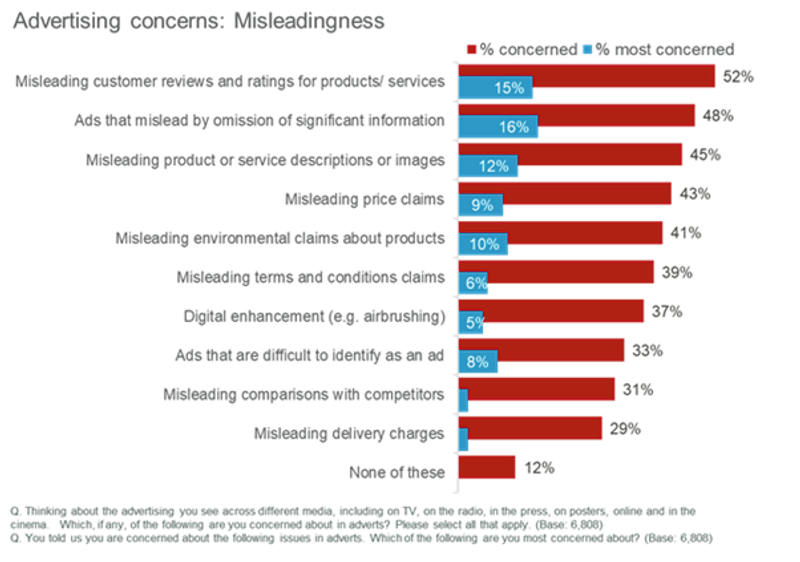The ASA/CAP have released a post called: Understanding Advertising: Misleadingness. I have enclosed the text of the link below, but please have a look at the ASA/CAP site as there are lots of things of interest to anyone with an interest in Ethical Marketing.
We’re committed to protecting the public by ensuring that ads across all media are legal, decent, honest, and truthful. As part of our 2024–2028 strategy, AI-assisted collective ad regulation, we’re using research to better understand public concerns and prioritise our work on the issues that matter most.
This latest report, the third and final in our Understanding Advertising series, focuses on misleadingness in advertising. Based on a UK-wide survey of over 6,500 people (aged 16+), conducted by independent research agency YouGov, it explores the types of misleading ads that concern the public most.[1]
Our research indicates over half (52%) of respondents are concerned about misleading customer reviews and ratings. This is followed by concerns about ads that omit key information (48%) and those that use misleading images or descriptions (45%)—the top three issues people say they’re most concerned about.
Interestingly, most respondents say they’re equally worried for themselves and others in society—highlighting the wider perceived impact of misleadingness, including financial harm.

This report reinforces our commitment to tackling misleading ads and shows how public concern aligns with our work on environmental claims and ad labelling—areas where we provide guidance to support transparency and consumer trust.
[1] Research was conducted by YouGov Plc on behalf of the ASA. The total sample size was 6,808 respondents aged 16+. Fieldwork was undertaken between 8th – 29th July 2024. The survey was carried out online. The figures have been weighted and are representative of all UK adults (aged 16+). Analysis of results was conducted by the ASA.


